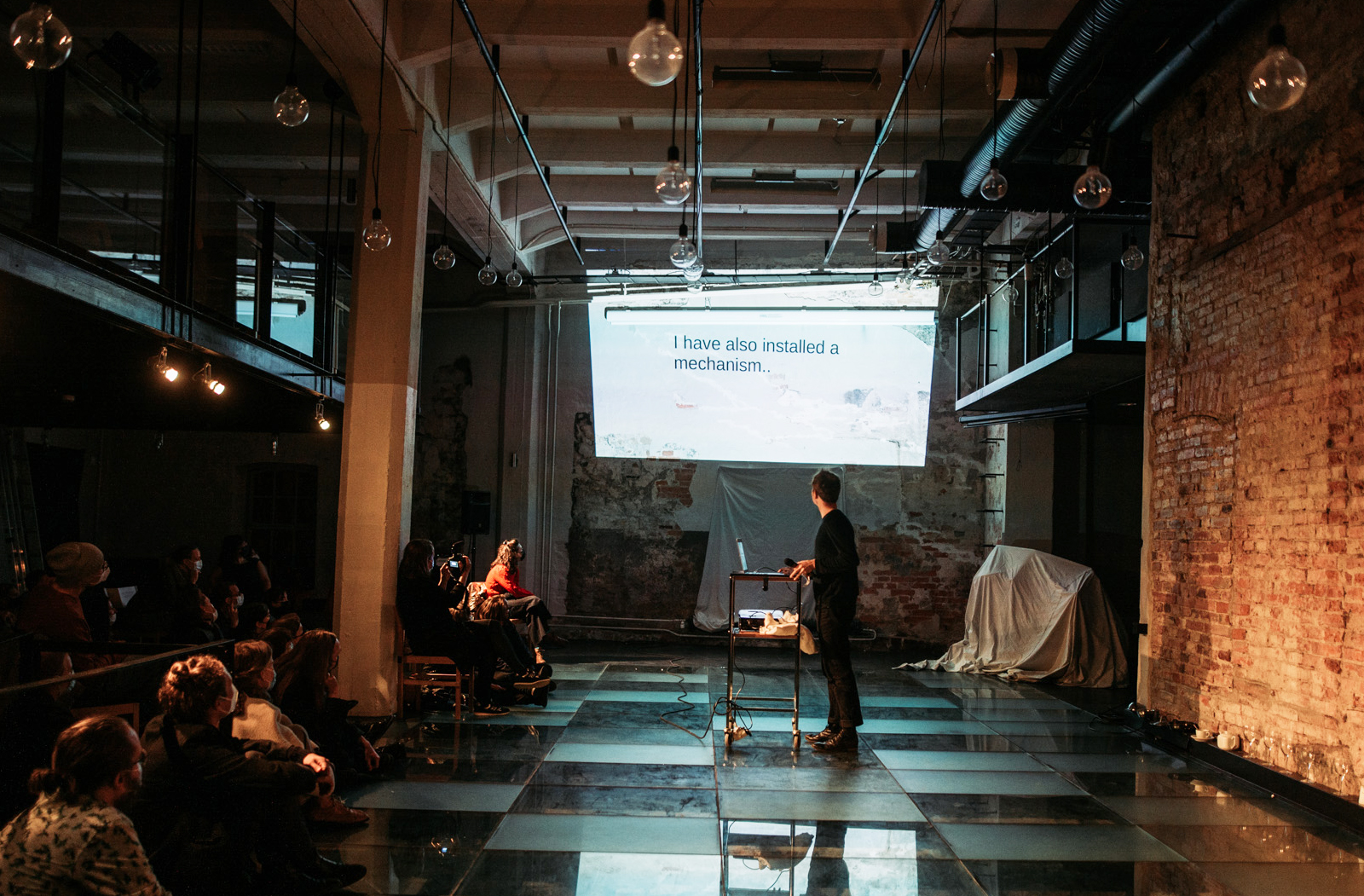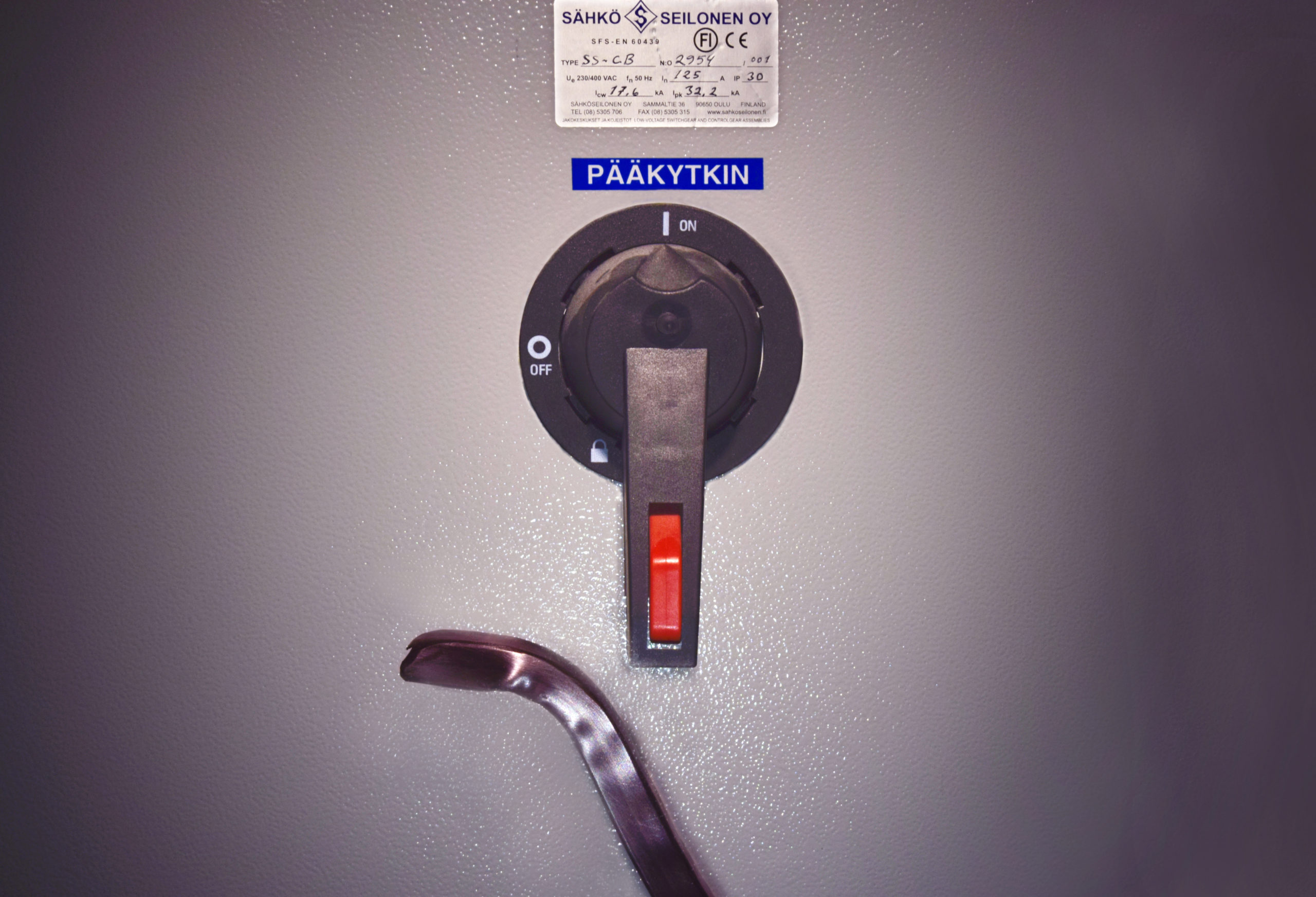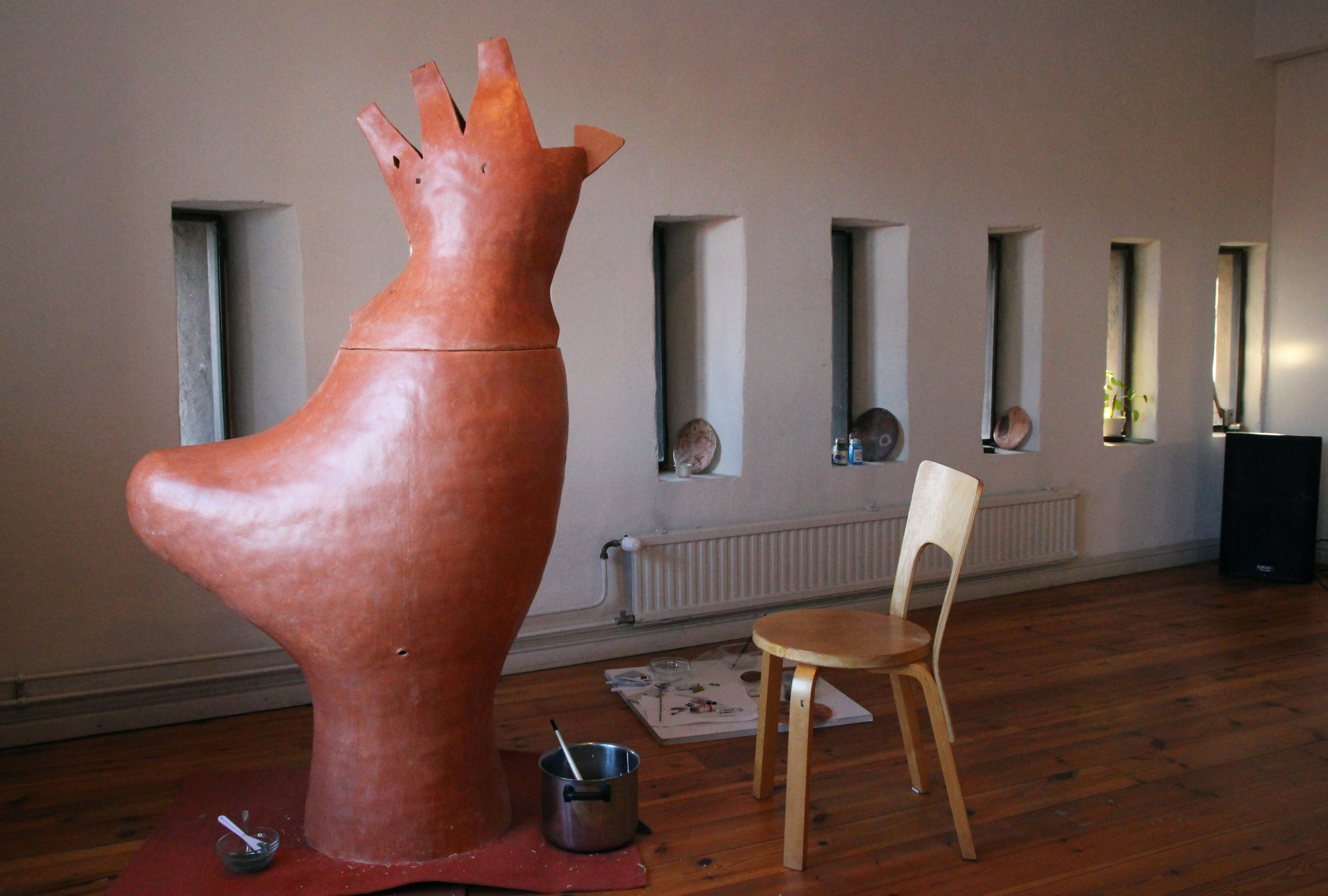9 Dec 2021
Interview
TIMO VIIALAINEN: MEANINGFUL DETAILS IN SOUND, MERGING THE PRESENT WITH PERMANENCE
Timo Viialainen is an artist working with sound, performance, as well as visual art. His, often sculptural, works habitually engage the viewer. Timo’s residency period at HIAP spreads out for almost a year, from June 2021 until May 2022. His works will be exhibited in a solo exhibition in January 2022 at gallery Oksasenkatu 11 in Helsinki.

Engagement performance part IV (2021), New Performance Turku Festival. Photo: Jussi Virkkumaa.
AA: You work in the fields of visual art, performance art and sound art. How do you listen to the world around you? How do you see the relationship between sound, space and performance?
TM: Well it depends on how sound is defined. I tend to think sound is something becoming something. It gives voice and individuality to things that might seem as mere objects and others. It can be very affective and moving thing that bypasses all language and categorisation. I guess I’m quite sensitive and analytical when listening to sounds in everyday life as I have a long background in working with my ears. There is also a bit of disappointment with this as when moving from sound background to visual art I’ve come to realise that visual and language always dominate and come first. All the little, subtle details in sound are perhaps only meaningful to me.
In performance art I’m interested in the present and the present always happens in a space which is also the case with sound. If I do a performance, it’s all about the specific space and time and how to activate that. So, for example I never take the infrastructure like the speakers for producing sound for granted but I try to think what they are as materials and where should they be put in the space if I use them. There is so much representation of sound through speakers that I nowadays try to avoid using them. Luckily, I have found all sorts of things that make a loud acoustic sound by themselves (like dry ice, different kinds of alarm systems, electric pumps and so forth).
AA: You have said that your installations intend to activate the viewer. Engagement, for example, allowed the audience full decision-making power. Do you believe the viewer is always responsible for their actions? What if they make the wrong decision?
TV: Haha, a good question. Yes, indeed there is a thin line in this and very hard to make a general rule. I would say that the artist is responsible for very much, so definitely the viewer is not always responsible. But I would like to be able to activate the kind of thinking in the viewer that yes, my actions matter, and they have an impact on the world. So, what kind of impact do I as a viewer want to have? Do I want to shut down an art exhibition by turning the electricity off? Then again of course a lot of other thoughts and things become to play in here and maybe the viewer thinks of what the artist has thought and is the artist just playing and teasing the viewer and maybe there is the fear of being played as a fool, which is a bit sad as I think being a fool is really a starting point for learning something and not something to be only ashamed of.
To the question what if they make the wrong decision, I would of course like to minimise the possibility of something actually bad happening. But I would also like to criticise the kind of thinking of minimising all possible risks as I think often the motives of doing it are not actually of being concerned about the safety of the viewer but of minimising the risk of having to be responsible for something uncomfortable. At this point most of the institutional representatives, like technicians, withdraw to following guidelines to avoid having to make case sensitive decisions that would require extra effort. The interesting part is that guidelines and instructions are always very limited and thus there is room for things like life and art to happen. My work Engagement is, for example, trying to challenge what can be done in a space that has more and more digital infrastructure for controlling and guiding our behaviour.

Engagement (2020). Photo: Timo Viialainen.
AA: When I experience objects, I often think about what they are not, and perhaps also what they have been before. Your large ceramic bird-whistles (which I have not seen yet, only read about,) seem to capture this feeling rather aptly. Did you intend the sculptures to hold meanings of impossibility and versatility?
TV: In sculptures I have developed an interest that is contradictory to my work in sound and performance art that deal very much with the present moment. In sculpture I’m interested in materials that will stay in time and their meaning and purpose will change in decades, centuries and so forth… Also, they will become more and more separate from me. For example, stone will last time very well, as you can just leave the work outside and it will stay. Then again working with stone might be erasing hundreds of millions of years of history as once you brake some surface on the stone then you have the surface that the tools you work with will make and the surface that was formed in very long periods of time is gone. So, working with stone is being in contact with a very different time perspective.
Besides this, many of my sculptures have some movement or sound happening in them. I would call these the active parts, and they are usually for the actual exhibition and for the experience and concept. To achieve sound and movement there is all this electronics and machines but then separate from this there is the physical form like in the huge ceramic bird-whistles. And I try to make the physical form kind of self-standing, so it works also without all the active parts with the sound and movement.
As for the question I think in some works its quite much about the material and what the material was before and in some works you just have to let go of how the material was before and shape it in to something new (though you can’t really hide it in the end and all materials have their history). I would say I’m more interested in actual things rather than the possible things that is to say. I just try to stretch the line of what is possible.

Studio view, work in progress, 2021. Photo: Timo Viialainen.
AA: Has your experience of HIAP and Suomenlinna presented you with collaborations and new audiences? Friendships, perhaps?
TV: New audiences for sure with the open studios for example. I should collaborate with a sound performance related idea with one resident that just left if we get to the same country again. I think that that’s the thing that with most of the 3-month residents, it’s uncertain if we will ever meet again. But it’s nice that there are also those who are longer and based in Helsinki so there is a continuity and connection with them that has time to form into something deeper.
The residency and studio space for Timo Viialainen was granted by The Academy of Fine Arts Foundation in collaboration with HIAP.
All photos courtesy of Timo Viialainen.
More:
https://timoviialainen.com
